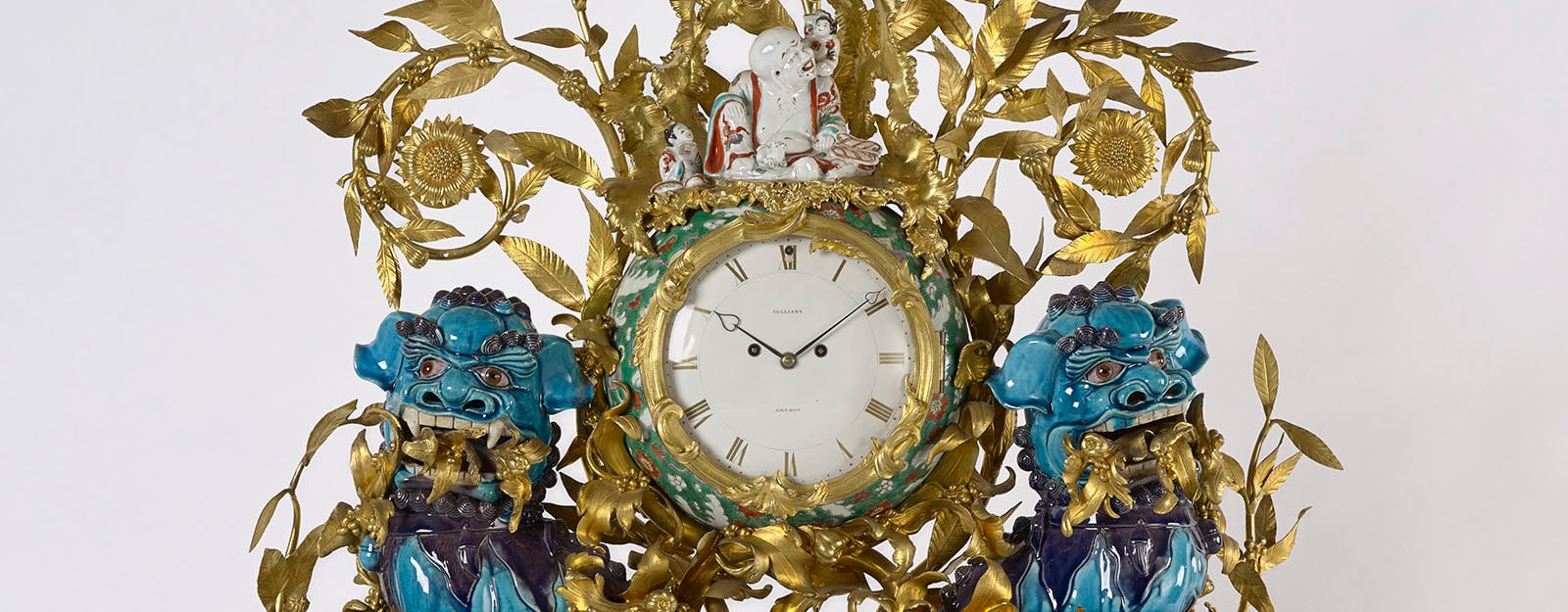
A Prince's Treasure
120 objects from the Royal Collection return to the Royal Pavilion in Brighton
Pair of vases with mounts
vases: mid-18th century, mounts: 1804 and 1819Porcelain encrusted with mother-of-pearl set in black lacquer (lac burgauté), with gilt bronze | 48.2 x 27.9 x 21.6 cm (whole object) | RCIN 2346
A pair of Chinese porcelain vases mounted with English gilt-bronze mounts. Bottle-shaped, with globular body tapering to a cylindrical neck, decorated in shell, with, on one side, a lake with boats and a pagoda, and on the reverse, a balustraded garden with figures admiring the scenery, a servant carrying a qin zither, and growing bamboo. Round the shoulder are diapered borders, and round the neck, a figure in a boat, below a lozenge-diaper border. The top rim is fitted with a deep gilt-bronze cup, with a thickly cast, rope-patterned, spreading rim, and a pair of angular flat handles, resting on the sides below with a scroll above the mask, ‘emblematical of Vegetation’. The foot sits in a cup of eight shells on a heavy, spreading, stepped foot with rope-cast border. The base is filled with a pine block, with a circular nut fixed to the core thread.
Identifiable in B.L. Vulliamy’s bill for the quarter ending 5 January 1820: ‘Taking to pieces a pair of mounted black Japan China Bottles and adding a Bowl Shell ornament to each & making 4 new masks gilding the new work strongly in ormolu and recleaning & refreshing the ornaments with gilt mountings’ (National Archives LC 11/28). Once their ornament had been updated, they were sent to Brighton. Identical ‘shell ornament’ was added by Vulliamy to the red-glazed vase RCIN 881. At Brighton, it is perhaps one of two similarly mounted vases visible in Nash 1826, pl. XVII, in the Music Room Gallery, under cabinets between the windows. Though it is not known when these vases were presented by Queen Charlotte to her eldest son, ownership of them may have encouraged George IV in pursuit of a Chinese aesthetic. Lac burgauté is the decorative technique of inlaying lacquer with small pieces of iridescent shell to form a pattern or scene. Originally thought to have started in China in the Ming dynasty, it was also used in Japan during the Tokugawa period (1603–1867).
Text adapted from Chinese and Japanese Works of Art in the Collection of Her Majesty The Queen: Volume II.







